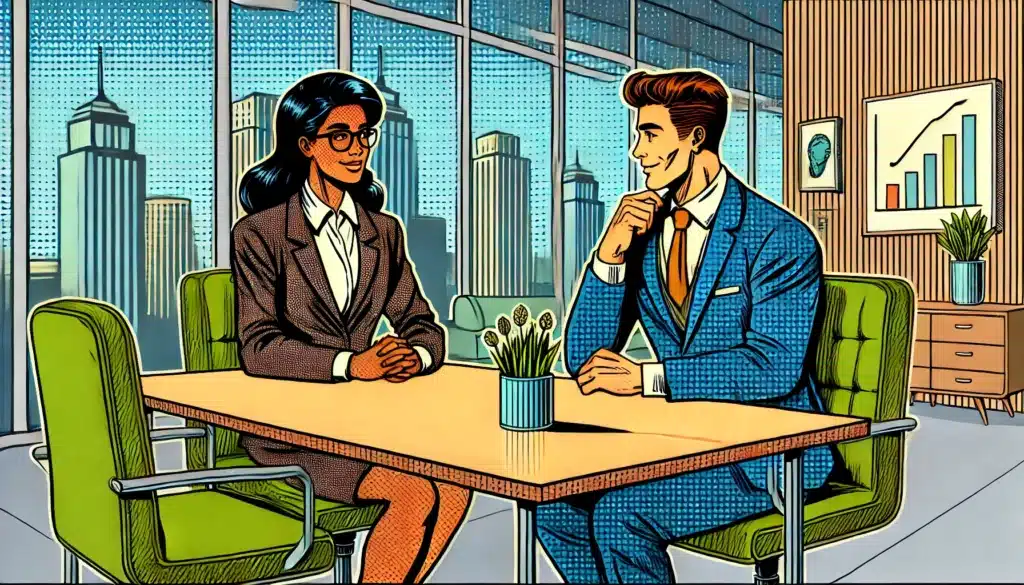
John Minnix
February 26, 2025
Continual Compliance vs. Continuous Compliance
In today’s fast-paced and ever-evolving business landscape, maintaining robust cybersecurity compliance is a competitive advantage. With regulations and security threats constantly changing, businesses must adopt effective compliance strategies to safeguard their sensitive data and reputation. Two prominent approaches in this regard are Continual Compliance and Continuous Compliance.
In this blog post, we’ll explore the key differences between these approaches and help you determine which aligns better with your organization’s needs. Let’s get started!

Understanding Continual Compliance
What is Continual Compliance?
Continual Compliance is a periodic and iterative approach to managing cybersecurity compliance. It involves regular periodic assessments and reviews to ensure an organization complies with relevant standards, regulations, and security policies. These assessments often occur at scheduled intervals, such as monthly, quarterly, or annually.
Benefits of Continual Compliance
- Scheduled Assessments: Continual Compliance allows organizations to conduct assessments and audits on a regular schedule, providing a structured framework for compliance management.
- Resource Efficiency: This approach may require fewer resources for periodic assessments, making it more manageable for some businesses.
- Suitability for Stable Environments: Continual Compliance is well-suited for industries with less frequent regulatory changes and organizations with stable compliance requirements.
When to Consider Continual Compliance
Continual Compliance is often a preferred choice for businesses that can predict their compliance needs with relative certainty. If your industry has relatively stable compliance requirements, and you can allocate resources for periodic assessments, this approach may be a good fit for you.

Exploring Continuous Compliance
What is Continuous Compliance?
Continuous Compliance, on the other hand, is an ongoing and real-time approach to cybersecurity compliance management. It involves constantly monitoring and assessing compliance status, often through automated tools and processes. Continuous Compliance aims to provide real-time visibility into an organization’s compliance posture.
Advantages of Continuous Compliance
- Real-Time Monitoring: Continuous Compliance provides immediate insights into your compliance status, allowing you to detect and address issues as they occur or shortly after that.
- Automation: Automation is a central feature of Continuous Compliance, reducing the need for manual intervention and improving efficiency.
- Adaptability: Continuous Compliance is ideal for industries with rapidly changing regulations and organizations that require quick adaptation to evolving compliance requirements.
When to Consider Continuous Compliance
Continuous Compliance is particularly beneficial for businesses operating in dynamic industries with frequent regulatory changes. If your organization values real-time visibility into compliance status and can invest in automation and monitoring tools, this approach may be the right choice for you.

Continual Compliance vs. Continuous Compliance
Here are some key distinctions between Continual Compliance and Continuous Compliance:
- Assessment Frequency: Continual Compliance relies on periodic assessments, while Continuous Compliance involves real-time monitoring and assessment.
- Automation: Continuous Compliance heavily relies on automation, whereas Continual Compliance involves more manual processes.
- Response Time: Continuous Compliance allows for immediate action upon detecting non-compliance, whereas Continual Compliance may have longer response times.
- Adaptability: Continuous Compliance is better suited for rapidly changing environments, while Continual Compliance may be more appropriate for stable industries.
- Resource Utilization: Continual Compliance typically requires fewer resources for periodic assessments, while Continuous Compliance requires more resources for automation and real-time monitoring.
Effect of Continuous Compliance and Continual Compliance on Compliance Frameworks
SOC 2 (Service Organization Control 2)
Continuous Compliance: Continuous Compliance aligns well with SOC 2 requirements, particularly in monitoring and reporting aspects. Continuous monitoring ensures that security controls are consistently in place and effective, offering real-time insights into any deviations. Automated alerts and responses help maintain the confidentiality, integrity, and availability of customer data, which are crucial aspects of SOC 2 compliance.
Continual Compliance: While Continual Compliance can be adapted to meet SOC 2 requirements, it may involve more manual audits and assessments. The periodic nature of Continual Compliance assessments may result in delayed detection of control failures or vulnerabilities. It’s important to supplement Continual Compliance with regular checks and updates to stay in line with SOC 2 expectations.
CMMC (Cybersecurity Maturity Model Certification)
Continuous Compliance: CMMC places a strong emphasis on real-time cybersecurity monitoring and the ability to adapt to emerging threats. Continuous Compliance is an ideal fit for CMMC, as it provides the necessary real-time visibility into security controls and practices. Automated compliance checks and instant responses ensure readiness for CMMC assessments at all times.
Continual Compliance: While it’s possible to achieve CMMC compliance with Continual Compliance, it may require more effort to maintain the necessary documentation and evidence for periodic audits. Continual Compliance programs should include robust change management processes to ensure updates align with CMMC requirements.

HIPAA (Health Insurance Portability and Accountability Act)
Continuous Compliance: HIPAA compliance is heavily focused on safeguarding patient data and requires continuous monitoring of healthcare systems. Continuous Compliance is well-suited to address these needs. Real-time monitoring and automated responses help detect and mitigate security incidents promptly, ensuring patient data remains secure.
Continual Compliance: Continual Compliance can also be adapted to meet HIPAA requirements, but it may be less efficient in responding to immediate threats and incidents. Regular assessments may not provide the same level of real-time assurance required for healthcare data security.
ISO 27001 (Information Security Management System)
Continuous Compliance: ISO 27001 emphasizes a systematic and proactive approach to managing information security risks. Continuous Compliance aligns perfectly with ISO 27001’s principles. Real-time monitoring of security controls, automated reporting, and immediate response to security events help organizations maintain compliance while continuously improving their security posture.
Continual Compliance: Continual Compliance can be used to establish an ISO 27001-compliant system, but it may require additional effort in terms of documentation and periodic assessments. Organizations adopting this approach should ensure that their Continual Compliance processes integrate effectively with ISO 27001’s risk management framework.
NIST (National Institute of Standards and Technology) Cybersecurity Framework
Continuous Compliance: NIST’s cybersecurity framework emphasizes continuous monitoring and adaptive security practices. Continuous Compliance aligns seamlessly with NIST’s recommendations. It provides the real-time monitoring, automation, and agility needed to detect and respond to security threats in line with NIST’s guidance.
Continual Compliance: Continual Compliance can also support NIST compliance by incorporating regular assessments, but it may lack the immediate responsiveness that NIST recommends for effective cybersecurity. Organizations should consider supplementing Continual Compliance with continuous monitoring capabilities.
In summary, both Continuous Compliance and Continual Compliance can be adapted to meet various compliance frameworks, including SOC 2, CMMC, HIPAA, ISO 27001, and NIST. However, Continuous Compliance tends to offer a more robust and agile approach, aligning closely with the evolving cybersecurity landscape and the real-time demands of modern compliance requirements. Organizations should carefully assess their specific compliance needs and the nature of their industry when choosing between these approaches.

Choosing the Right Approach for Your Business
When deciding between Continual Compliance and Continuous Compliance, take the following factors into account:
- Regulatory Landscape: Analyze the regulatory environment in your industry and the frequency of changes.
- Resource Allocation: Assess your organization’s budget, IT capabilities, and willingness to invest in automation and monitoring tools.
- Risk Profile: Consider your organization’s risk tolerance and the potential consequences of non-compliance.
- Industry Dynamics: Evaluate the pace of innovation and change in your industry, as well as the evolving threat landscape.
- Long-Term Strategy: Think about which approach aligns best with your long-term cybersecurity and compliance strategy.
In most cases, Continuous Compliance is the optimal choice, providing real-time protection, adaptability, resource efficiency, and future-proofing. It goes beyond mere compliance; it empowers your organization to proactively manage cybersecurity risks and ensure the safety of your digital assets in an era of ever-evolving cyber threats. However, your decision should reflect your organization’s unique needs, goals, and circumstances.
Conclusion
In the world of cybersecurity compliance, there’s no one-size-fits-all solution. Both Continual Compliance and Continuous Compliance have their merits and are valuable tools for maintaining a strong compliance posture. What’s most important is that you choose the approach that aligns with your business goals and regulatory requirements.
Remember that compliance is an ongoing process, and staying ahead of the curve is essential in today’s cyber threat landscape. Whichever path you choose, make sure it’s one that helps you protect your data, your reputation, and your future.

Bright Defense Delivers Compliance Solutions!
If you need cybersecurity compliance services, Bright Defense can help. Our mission is to defend the world from cybersecurity threats through continuous compliance. Bright Defense’s monthly engagement model delivers a robust cybersecurity program that allows you to meet compliance frameworks, including SOC 2, CMMC, and HIPAA. Our service includes a compliance automation platform to increase efficiency and decrease costs.
Additionally, we offer risk assessment services, gap analysis, managed security awareness training, and vCISO services. Wherever you are on your compliance journey, Bright Defense can help. Contact us today to get started!
FAQs – Achieving and Maintaining Continuous Compliance
What is continuous compliance, and how does it differ from other compliance approaches?
Continuous compliance is an approach to regulatory compliance that involves real-time monitoring and automation to ensure adherence to compliance standards. It differs from other compliance methods like periodic assessments (e.g., Continual Compliance) by providing immediate visibility into compliance issues and the ability to address them promptly.
What are the benefits of continuous compliance for my organization?
Continuous compliance offers several advantages, including real-time detection of compliance gaps, reduced response times to security threats, enhanced adaptability to changing regulations, resource efficiency, and improved protection of critical assets.
How can I ensure that my organization achieves continuous compliance with regulatory standards?
Achieving continuous compliance requires implementing a continuous compliance process that includes automated monitoring, regular assessments, immediate response to compliance issues, and proactive adaptation to evolving regulations. It’s essential to invest in compliance management tools and technology to support this process.
What are some critical assets that continuous compliance helps protect?
Continuous compliance helps protect a wide range of critical assets, including sensitive customer data, intellectual property, financial information, proprietary software, and any other assets that require strict adherence to compliance standards to mitigate risks.
How does continuous compliance address compliance issues like data breaches?
Continuous compliance monitoring enables organizations to detect potential data breaches and security incidents as they happen or shortly after. This early detection allows for immediate response, minimizing the impact of data breaches and helping to prevent regulatory penalties.
Can continuous compliance be applied to internal systems and processes?
Yes, continuous compliance can be applied to both external regulatory requirements and internal policies and processes. It ensures that all aspects of an organization’s operations are in alignment with compliance standards, reducing the risk of compliance gaps.
How does continuous compliance management differ from traditional compliance efforts?
Continuous compliance management is more proactive and efficient than traditional compliance efforts. It provides real-time visibility, reducing manual efforts, and enables organizations to address compliance issues as they arise rather than waiting for periodic assessments.
Is continuous compliance suitable for all types of businesses and industries?
While continuous compliance is highly adaptable, its suitability depends on factors such as the industry’s rate of regulatory change, the organization’s risk tolerance, and its commitment to maintaining compliance standards. It is often a preferred choice for businesses in dynamic industries with rapidly changing regulations. Managed service providers, SaaS providers, and healthcare organizations are potential fits.
How does continuous compliance help ensure compliance with various compliance standards, such as ISO 27001 and HIPAA?
Continuous compliance aligns with various compliance standards by providing continuous monitoring, automated reporting, and real-time responses to security incidents and compliance deviations. This ensures that organizations can consistently meet the requirements of these standards.
What steps can my organization take to start maintaining continuous compliance effectively?
To start maintaining continuous compliance, assess your organization’s current compliance efforts and identify areas for improvement. Invest in automation tools and technology, establish a continuous compliance process, and provide training to your compliance and security teams to adapt to this approach effectively.
Remember that continuous compliance is a proactive approach to compliance management that helps organizations stay ahead of compliance gaps and potential security threats, ultimately safeguarding critical assets and reducing compliance-related risks.
Get In Touch



